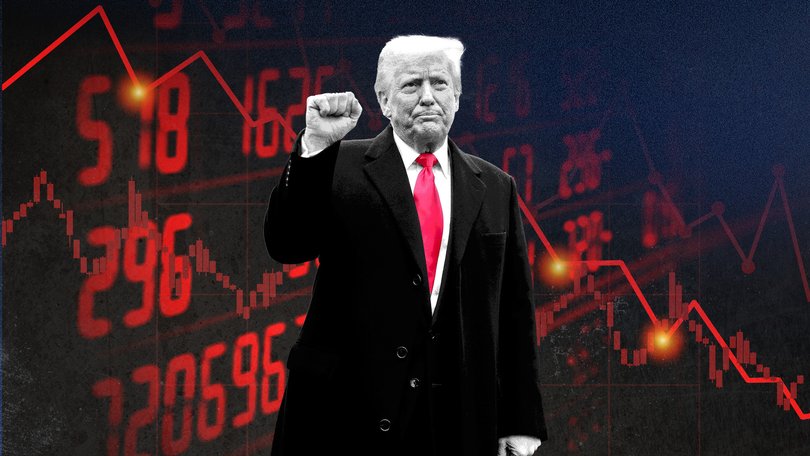Donald Trump’s tariff threat on EU and Mexico sends ripples through global markets, Asian stocks slide

Losses in Wall Street futures have dragged Asian stocks lower as the latest round of threats in the US tariff wars keep investors on edge, though the fallout has been limited by hopes it is mainly bluster by US President Donald Trump.
Mr Trump on Saturday said he would impose a 30 per cent tariff on most imports from the EU and Mexico from August 1, even as they are locked in long negotiations.
The European Union said it would extend a suspension of countermeasures to US tariffs until early August and continue to press for a negotiated settlement, though Germany’s finance minister called for firm action if the levies went ahead.
Sign up to The Nightly's newsletters.
Get the first look at the digital newspaper, curated daily stories and breaking headlines delivered to your inbox.
By continuing you agree to our Terms and Privacy Policy.Investors have become largely inured to Mr Trump’s chaotic policy methods and stocks eased only modestly, while the dollar gained just a fraction on the euro.
“It is hard to say whether the muted market response is best characterised by resilience or complacency,” said Taylor Nugent, a senior markets economist at NAB.
“But it is difficult to price the array of headlines purportedly defining where tariffs will sit from August when negotiations are ongoing.”
For now, MSCI’s broadest index of Asia-Pacific shares outside Japan were little changed, while Japan’s Nikkei eased 0.5 per cent on Monday.
S&P 500 futures and Nasdaq futures both eased 0.4 per cent. Earnings season kicks off this week with the major banks leading the pack on Tuesday.
S&P companies are expected to have increased profits by 5.8 per cent from the year-earlier period, down from an expectation of a 10.2 per cent gain on April 1, according to LSEG IBES.
Analysts at BofA noted the bar was low for earnings with consensus seeing a slowdown to four per cent growth, from the previous quarter’s 13 per cent.
“We expect a modest beat of two per cent, below the three per cent average and last quarter’s six per cent figure, though medium-term, we are more constructive,” they wrote in a note.
In bond markets, Treasuries got a very marginal safety bid and 10-year yields held at 4.41 per cent. Futures for the Federal Reserve funds rate edged higher as markets priced in a little more policy easing for next year.
While Fed Chair Jerome Powell has signalled a patient outlook on cuts, Mr Trump is piling up political pressure for more aggressive stimulus.
White House economic adviser Kevin Hassett over the weekend warned Mr Trump might have grounds to fire Powell because of renovation cost overruns at the Fed’s Washington headquarters.
Mr Trump said on Sunday it would be a great thing if Powell stepped down.
Figures on US consumer prices for June are due on Tuesday and could finally start to show early upward pressure from tariffs, though retailers still have pre-levy inventory to draw on and some companies are absorbing the costs into margins.
The impact on supply chain costs could show in producer price and import price figures this week, while a reading on retail sales will indicate how consumers are faring.
There is also a raft of data out from China starting with June trade on Monday, followed by retail sales, industrial output and gross domestic product the day after.
Among currencies, the euro dipped 0.2 per cent on the tariff news to $1.1665, edging away from its recent four-year top of $1.1830. The dollar added 0.1 per cent on the yen to 147.53 and a similar amount on its currency index to 98.008.
The dollar also gained 0.3 per cent on the Mexican peso to 18.6900 , with Mexican President Claudia Sheinbaum confident a trade deal could be reached before the August deadline.
In commodity markets, gold picked up a modest safe-haven bid and rose 0.3 per cent to $US3,366 ($A5,123) an ounce.
Oil prices edged higher on speculation Mr Trump could announce stiffer sanctions on Russia later on Monday, including levies on major customers buying Russian oil.
Brent edged up 0.1 per cent to $US70.45 ($A107.23) a barrel, while US crude firmed slightly to $US68.50 ($A104.26) per barrel.
